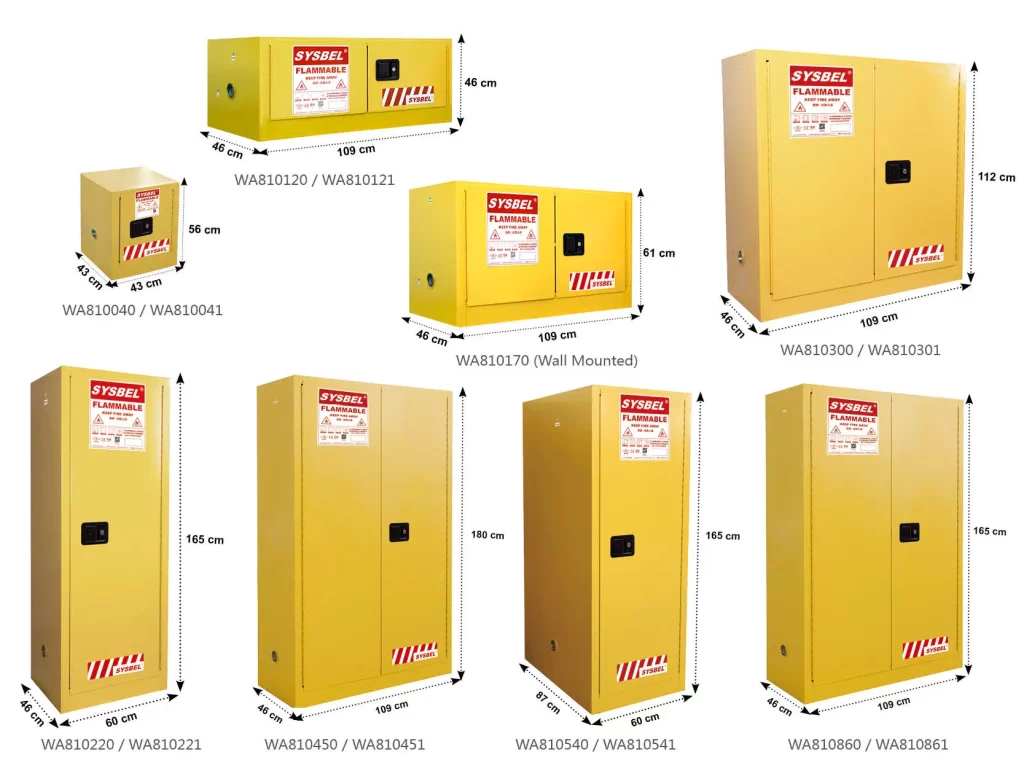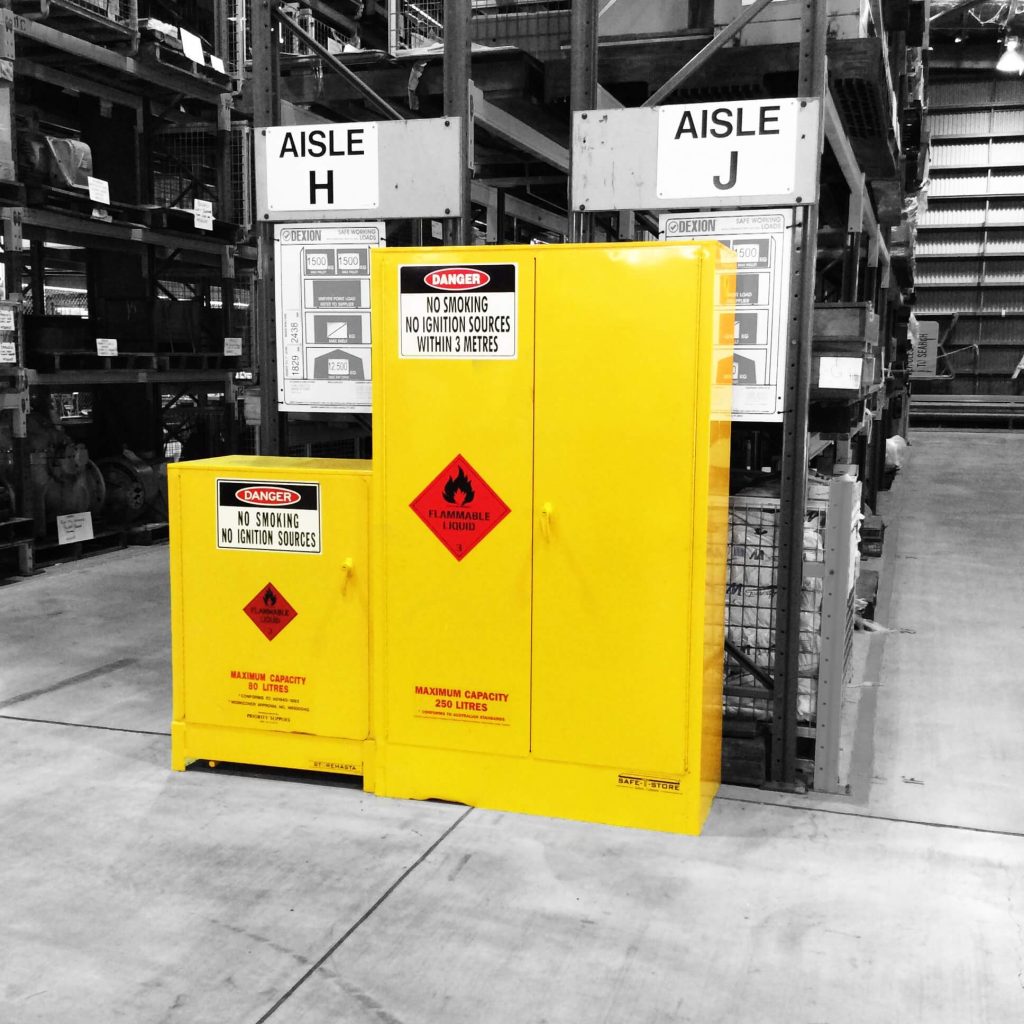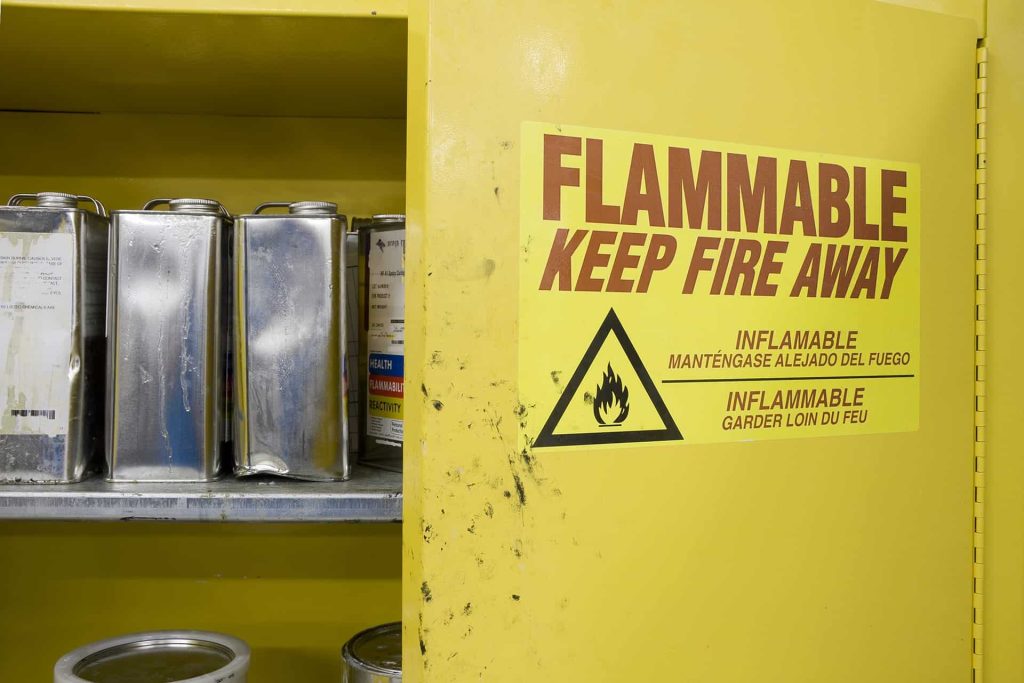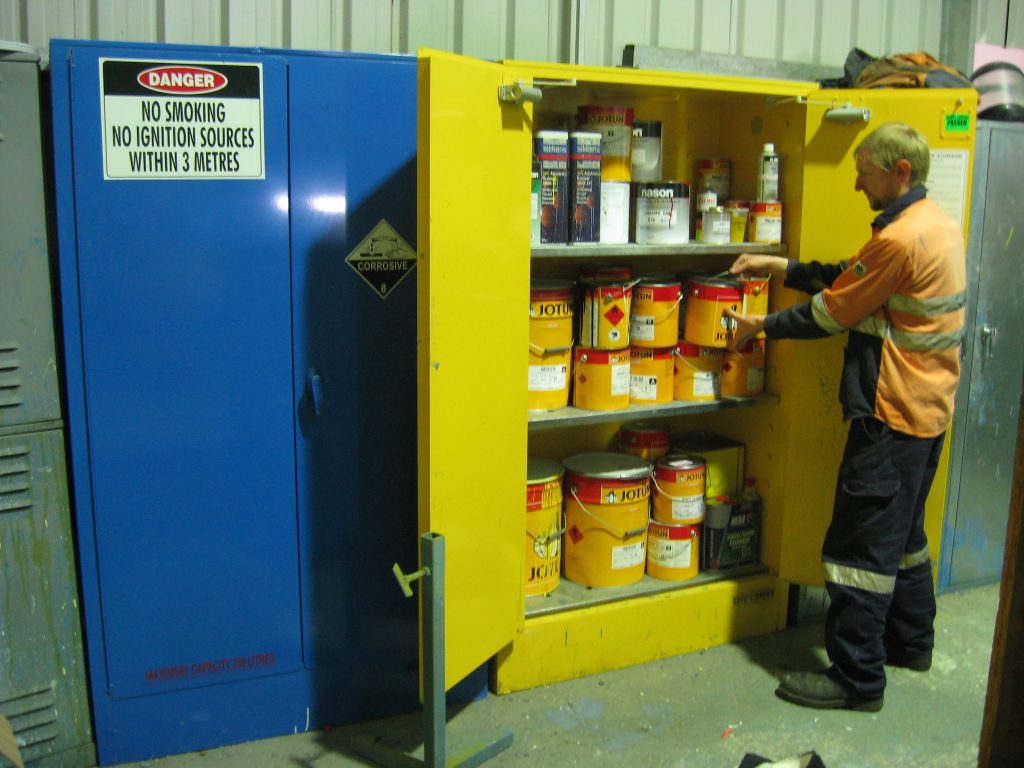Introduction
Flammable storage cabinet requirements are crucial components of workplace safety, designed to securely store flammable liquids and materials to minimize the risk of fire and protect both personnel and property. Understanding the requirements for these cabinets is essential for ensuring compliance with safety regulations and mitigating potential hazards in industrial, laboratory, and commercial settings.

Purpose of Flammable Storage Cabinets:
Flammable storage cabinets serve as specialized containers designed to safely store flammable liquids, such as solvents, fuels, paints, and chemicals.
These cabinets are constructed with fire-resistant materials to contain and isolate flammable substances,
preventing them from igniting and spreading in the event of a fire.
Regulatory Standards and Guidelines:
Flammable storage cabinets are subject to various regulatory standards and guidelines established by organizations such as the Occupational Safety and Health Administration (OSHA),
the National Fire Protection Association (NFPA), and the International Fire Code (IFC).
These standards outline specific requirements for the construction, labeling, placement,
and use of flammable storage cabinets to ensure maximum safety and compliance.
Construction Materials and Design:
Flammable storage cabinets are typically constructed of durable, fire-resistant materials such as steel or double-walled welded steel. The cabinet walls, doors, and shelves are designed to withstand exposure to fire and high temperatures, providing a protective barrier against ignition and heat transfer.
Fire-Rated Performance:
One of the key requirements for flammable storage cabinets is their fire-rated performance. Cabinets must be tested and certified to meet specific fire resistance ratings, such as UL 1275 or FM Approval Standard 6050, which evaluate their ability to withstand exposure to fire for a defined period without allowing the internal temperature to exceed safe limits.
Capacity and Storage Limits:
Flammable storage cabinets come in various sizes and configurations to accommodate different storage needs. It’s essential to select cabinets that match the quantity and types of flammable liquids used in the workplace. Cabinets should not be overcrowded, and stored materials should be organized to prevent spills and facilitate safe handling.
Ventilation Requirements:
Proper ventilation is critical for flammable storage cabinets to prevent the buildup of flammable vapors and maintain a safe environment. Cabinets should be equipped with vents or pressure relief mechanisms to allow for the release of vapors in the event of a fire or temperature increase. However, vents must be designed to minimize the risk of flames entering the cabinet.
Labeling and Signage:
Flammable storage cabinets must be clearly labeled with prominent signage indicating their contents and potential hazards. Labels should include information such as the type of flammable liquids stored, storage capacity, and any relevant safety instructions or precautions. Proper labeling helps ensure that cabinet contents are easily identified and handled safely.
Location and Placement:
Flammable storage cabinets should be strategically located in areas where flammable liquids are used or stored, such as laboratories, workshops, or industrial facilities. Cabinets should be positioned away from heat sources, ignition points, and high-traffic areas to minimize the risk of accidental exposure to fire or impact.
Training and Awareness:
Employers are responsible for providing training and awareness programs to educate employees on the proper use of flammable storage cabinets and the associated safety protocols. Training should cover topics such as cabinet labeling, storage procedures, emergency response protocols, and the importance of maintaining a safe work environment.
Inspection and Maintenance:
Regular inspection and maintenance of flammable storage cabinets are essential for ensuring their continued effectiveness and compliance with safety standards. Cabinets should be inspected periodically for signs of damage, corrosion, or wear and tear. Any defects or deficiencies should be promptly addressed, and cabinets should be maintained in good working condition at all times.

Compatibility of Stored Materials:
It’s important to ensure that the materials stored in flammable storage cabinets are compatible with the cabinet construction materials. Some chemicals and substances may react with certain metals, potentially compromising the integrity of the cabinet and increasing the risk of leaks or spills.
Secondary Containment:
In addition to storing flammable liquids in cabinets,
it’s often required to provide secondary containment measures,
such as spill containment trays or basins,
to further reduce the risk of spills or leaks. Secondary containment helps prevent the spread of flammable liquids in the event of a cabinet failure or spill.
Grounding and Bonding:
Flammable storage cabinets should be properly grounded and bonded to prevent the buildup of static electricity, which can create a spark and ignite flammable vapors. Grounding and bonding systems should be inspected regularly to ensure their effectiveness.
Emergency Response Equipment:
Flammable storage areas, including cabinets,
should be equipped with appropriate emergency response equipment, such as fire extinguishers, spill kits, and personal protective equipment (PPE).
Employees should be trained in the proper use of this equipment and the procedures to follow in the event of a spill or fire.
Documentation and Recordkeeping:
Maintaining accurate documentation and records related to flammable storage cabinets is essential for demonstrating compliance with regulatory standards. Records should include information such as cabinet inspection dates, maintenance activities, and employee training records.
Consultation with Safety Experts:
For complex or high-risk flammable storage situations, it may be beneficial to consult with safety experts or fire protection engineers to ensure that all requirements are met and that the storage solution is safe and effective.
Review and Update of Safety Protocols:
Safety protocols and procedures related to flammable storage cabinets should be regularly reviewed and updated to reflect changes in regulations, technology, or best practices. This helps ensure that employees are aware of current safety standards and procedures.

Spill Containment and Cleanup Procedures:
Establishing spill containment and cleanup procedures is crucial for managing accidental spills or leaks from flammable storage cabinets. This includes having absorbent materials on hand, such as spill pads or booms, to quickly contain and clean up spills to prevent environmental contamination and fire hazards.
Storage of Compressed Gases:
If storing compressed gases in flammable storage cabinets, additional safety measures may be required. Cabinets should be designed to accommodate the specific requirements of compressed gas cylinders, including securement, ventilation, and segregation from flammable liquids.
Inventory Management and Rotation:
Implementing an inventory management system can help monitor the quantity and condition of flammable liquids stored in cabinets. Regularly rotating stock ensures that older or degraded materials are used first, reducing the risk of chemical degradation or instability.
Temperature and Humidity Control:
Maintaining appropriate temperature and humidity levels within flammable storage areas can help preserve the integrity of stored materials and prolong the life of the storage cabinets. Monitoring equipment, such as temperature and humidity gauges, should be installed and regularly checked to ensure optimal storage conditions.
Security and Access Control:
Restricting access to flammable storage cabinets to authorized personnel only helps prevent unauthorized use or tampering with hazardous materials. Implementing security measures, such as locking mechanisms or access control systems, can enhance the overall safety and security of the storage area.
Disposal of Hazardous Waste:
Proper disposal of hazardous waste is esential for managing flammable materials that are no longer needed or have exceeded their shelf life. Establishing a waste disposal program ensures that hazardous materials are handled, transported, and disposed of in compliance with local, state, and federal regulations.
Emergency Evacuation Plans:
Developing and communicating emergency evacuation plans specific to flammable storage areas ensures that employees know how to safely exit the area in the event of a fire or other emergency. Regular drills and training exercises help familiarize employees with evacuation routes and procedures.
Continuous Improvement and Feedback:
Encouraging feedback from employees and conducting regular reviews of flammable storage practices can identify potential areas for improvement and innovation. Continuous improvement initiatives help adapt and refine safety protocols to address evolving risks and challenges in the workplace.

In conclusion
Understanding the requirements for flammable storage cabinets is vital for promoting workplace safety and minimizing the risk of fire-related incidents.
By adhering to regulatory standards, implementing proper storage practices,
and providing employee training and awareness,
organizations can create a safer work environment and protect personnel and property from the dangers associated with flammable materials.



